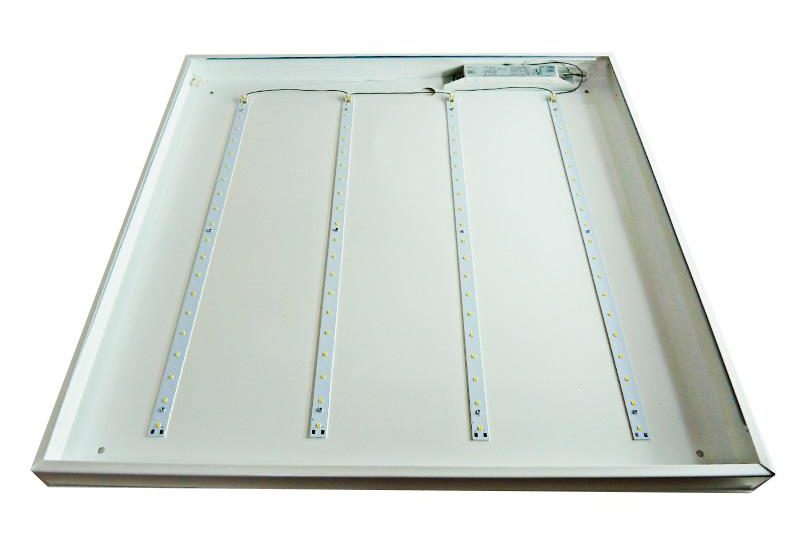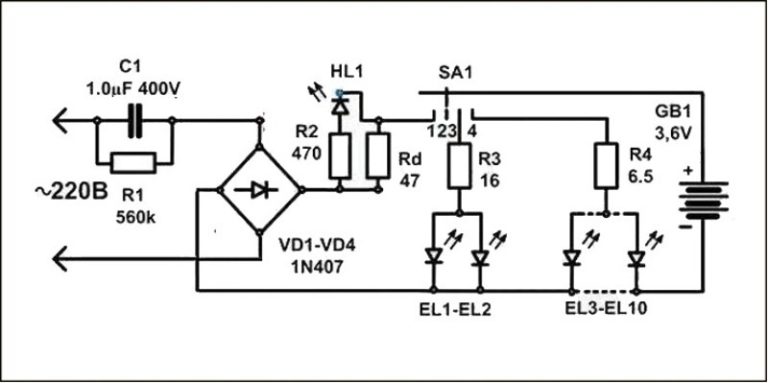Peculiarities of Armstrong LED lighting fixtures repair
Today, LED lights are in almost every home. Due to their low power consumption and high luminous flux, their popularity is growing every day. Armstrong ceiling light has become a favorite of the office industry. Thanks to it millions of office spaces are comfortably illuminated. Let's see how it is designed, what causes of problems can arise during its operation, and let's repair the LED Armstrong luminaire.
The design of the luminaire

Armstrong LED ceiling light has a size of 600x600 mm. It is installed in the profile of a suspended ceiling of the appropriate type. The design and appearance may differ, but the principle of operation is not affected. Design:
- metal body of the luminaire (aka radiator of the LED strip);
- protective screen (diffuser);
- LED strip (differs in the type of installation of LEDs);
- Power supply (driver or 12 volt power supply).

Repair of luminaire
Repair of Armstrong luminaire should begin with a short introduction on theory. In order to repair a light fixture, you need to know what the differences in them are. The reason for the differences is the large market of manufacturers. Each company uses the equipment they have, makes it convenient for them and focuses on the end user. Someone saves on materials, someone chooses a more profitable for them design. We should understand this and know everything to avoid misunderstandings.
Theory
In the section on the construction of the light fixture, we explained what a lighting fixture consists of. We are interested in its electrical part: the power supply, wires and LEDs, which are mounted on a flexible circuit board. Let's look at an example in the photo:

The first thing you should pay attention to is the power supply. It has technical specifications. They immediately become clear what power supply is used. There are two options:
- The driver - A type of power supply designed to power LEDs with a given current. Such a source is indicated by its power and output current. The voltage is specified in a range and does not have a constant value. It is because the output voltage is not fixed, but varies within a given range and sets the desired load current. There is no way such a power supply will deliver more current to the circuit than it is designed for. If used incorrectly, it simply goes into protection and does not start the circuit.LED driver: power 37W, output voltage 64-106V, maximum current 350mA.
- The 12-24V power supply is an AC to DC converter that has a fixed output voltage value.12 volt DC power supply unit.
The type of power supply used also determines how the LEDs are mounted on the circuit board. For 12-24 volt power supplies, the LEDs are mounted in modules of three in one. For each module a resistor is mounted.

Resistors are not used for power supply from the driver. The tape module is selected depending on what LEDs are used, from the calculation of their current and power. The module can include from one to ten LEDs.
What to do if the Armstrong LED light fixture does not work
We found out and figured out what the main design differences may have ceiling fixtures. Repair of the luminaire Armstrong begins with its opening. It is necessary to find and unscrew the screws that hold the diffuser. After we need a device to measure the voltage. Further operations will list in a sequential list:
- Make an external inspection of the luminaire for signs of burning.
- Check the input voltage of the power supply - the power supply cable may be damaged;
- Check the output voltage of the power supply - to do this set the instrument in DC measurement mode:
- For 12-24 volt power supplies, the output voltage should be stable and show a value at least equal to the declared one. If it is absent - replace the power supply or repair it (we will consider later);
- For the driver the test conditions are similar - the lack of power at the output indicates its failure. The voltage at the output should not jump from zero to the maximum value, such a phenomenon is caused by the absence of load and can mean a fault in the LED circuit.
- Check the LEDs - to do this, set the device in the test mode (minimum resistance). The common probe is black, it acts as a plus contact. The red one is the minus. Touch the LED pins on both sides with the probes, reversing the polarity. A faulty LED is sure to light up, and the entire module will glow with it. With this check you can find all burnt-out LEDs. Mark them with a marker.Check the LED or a multimeter test. Information on the display - O - diode OK, current flows; OL - diode OK, no current flows.
- Replace burnt LEDs with their analogues. Use only the type of LED used. Do not install other models, because they have a different load current and will go out on their own or put the whole circuit out of operation.
- General circuit diagram of the luminaire. The illustration shows a diagram with the ribbons connected in in series to the power supply. There can be more ribbons. The order does not change.

Through the use of modules their connection to the power supply is carried out by the method of series-parallel connection, so if one of the LEDs connected in series stops working the whole circuit, and burns out its specific section.
Power Supply Repair
At home you can check the power supply and repair it if the capacitor has failed (there was a breakdown) or the fuse. First you need to disassemble it and make an external inspection of the board. You may see characteristic traces of burning. The cause may be a burned transformer, most likely such a unit will have to be replaced.

The fuse is checked with a continuity test. If it fails, after replacing it and connect power supply to the circuit make sure that there are no shorted tracks on the printed circuit board of the LEDs, maybe it is oxidized and shorted.
In this video the author makes a quick repair of an Armstrong office light.
Conclusion
LED can burn out from prolonged overheating, so when assembling the lamp, pay attention to the fit of the LED strip to the body. If part of the strip does not fit tightly, place so that the adjacency to the metal of its back side is even - this will increase the heat output and therefore the service life.
Note that all work must be carried out with the power disconnected. Observe safety rules - this will save you from accidents. All repairs must be carried out step by step.




